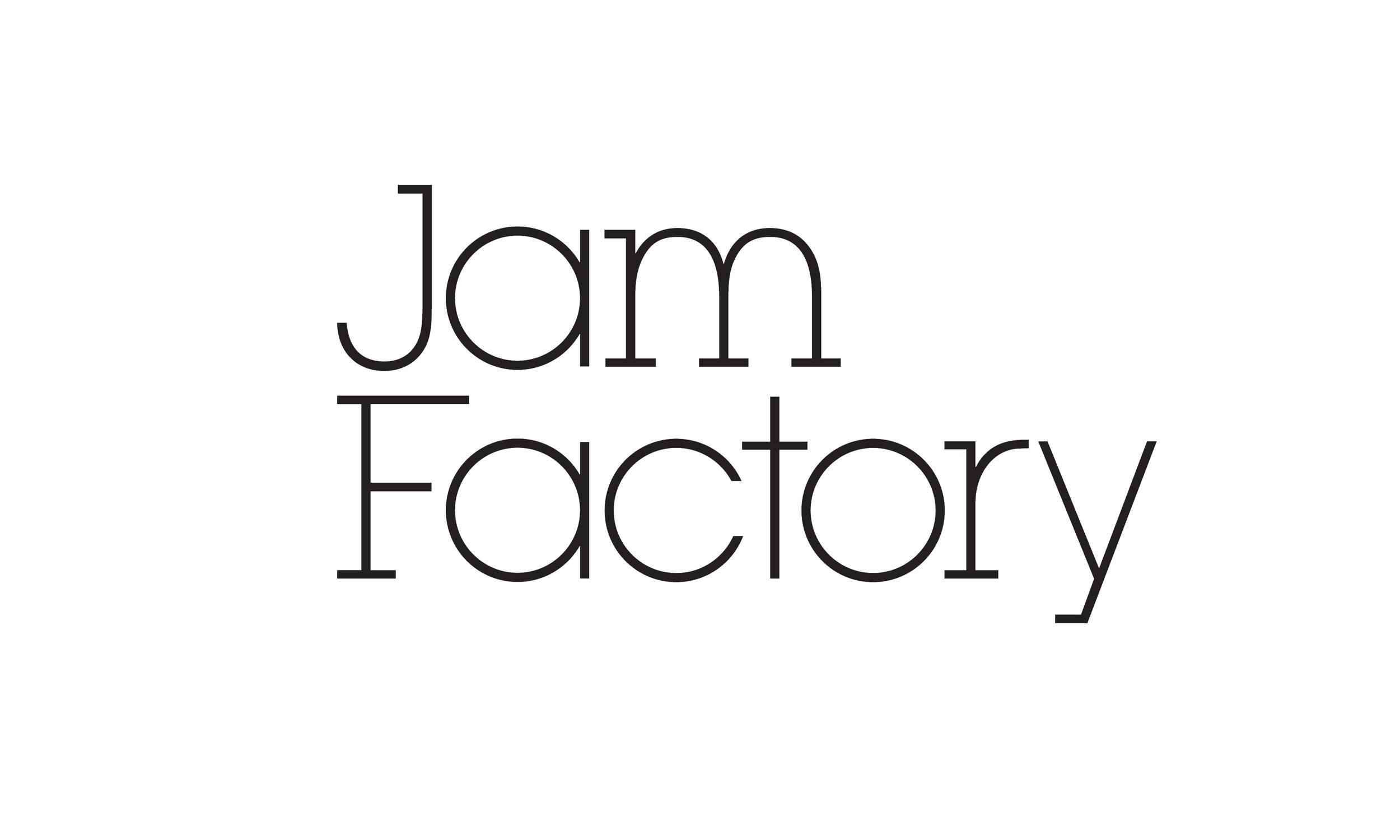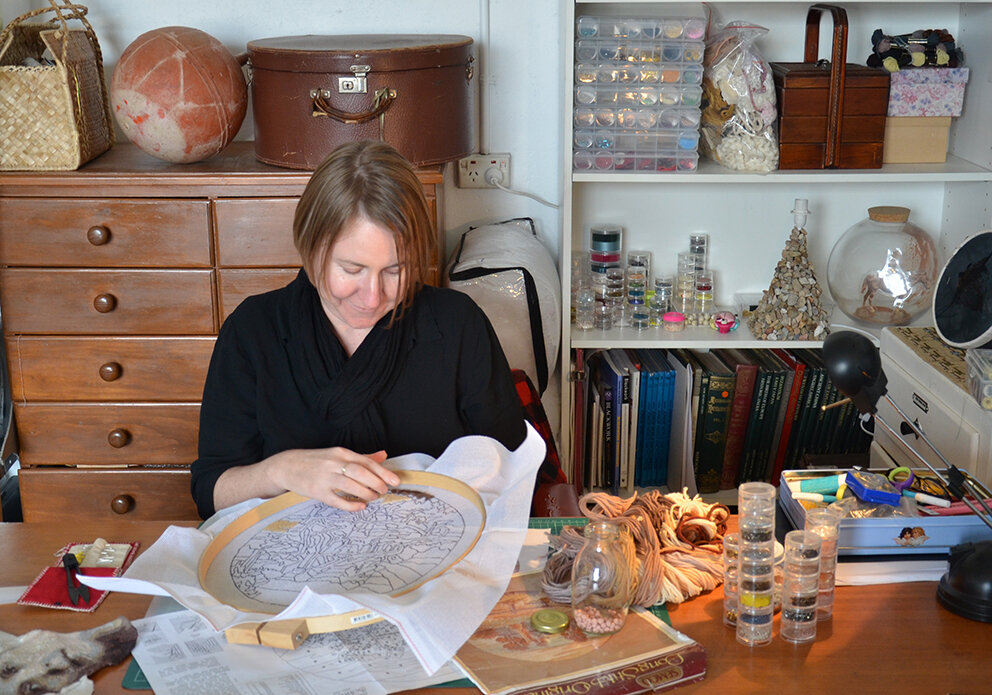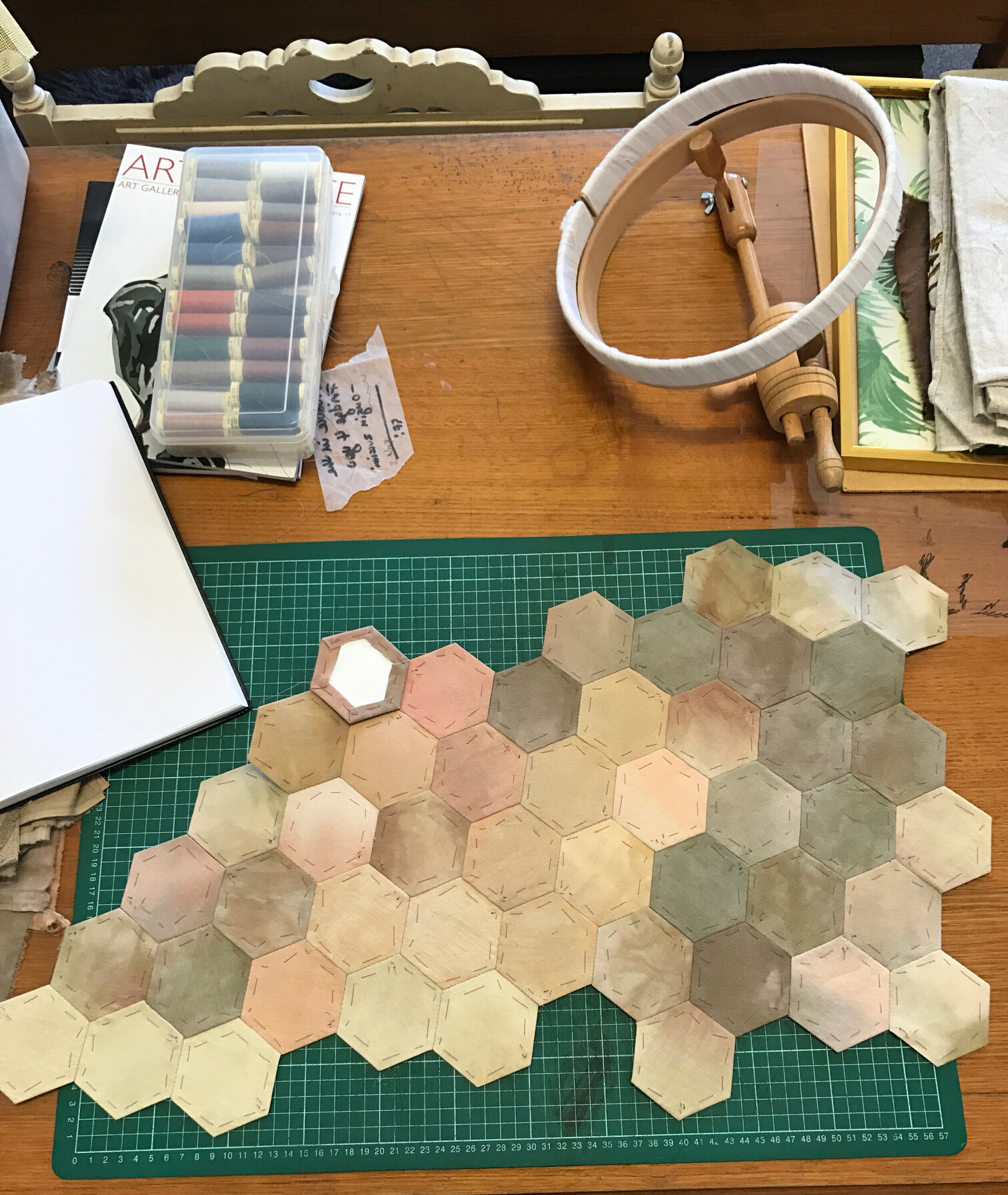Five Minutes With... Sera Waters
Sera Waters in the Studio.
We spend five minutes with artist Sera Waters as she unpacks some of the ideas behind her practice ahead of her upcoming solo show at JamFactory Seppeltsfield.
Photos supplied by the artist.
Your practice has been described as examining the "home-making practices of women and your own genealogical ghostscapes". How have the women in your family inspired your textile practice and the ideas in your work?
The women of my family’s history have occupied that common (and frustrating) position between balancing home-making with other work (paid or otherwise), whilst also having these caring labours and domestic skills undervalued societally. I believe as a result of this devaluing, which especially grew in the last century, I did not inherit many textile skills from my mother’s generation. While my grandmothers were hobby knitters or stitchers, by the time I came around the mass-production of textiles was in full swing and the needs around domestic textile production had shifted. However, growing up in country South Australia (Mount Gambier – Bungandidj Country) I did develop a penchant for homely craft projects and dabbled in these as a child.
Despite many textile skills not being passed directly along to me from family members, I do feel they are in my blood, in my genetic material somehow. As an adult I scoured my family history to find clues for the type of home-making textile practices that ancestors from centuries ago performed and use this information to rediscover or ‘re-member’ skills and techniques that might otherwise be lost. l use these skills, the meaning they carry, as well as materials they used, as a way to recognise the value of my female ancestor’s lives.
Importantly, part of this recognition for me is also acknowledging that within those ancestral home-making practices are domestic ways of colonising which have caused great damage to this country’s First Nations people. My practice is directed by a truth-telling imperative that looks closely at the knots of our shared and tangled pasts. Knots are key to this thinking as it is not my intention to judge the past but instead examine it to try and understand its complexity. Textile traditions are also key to this remembering and equally important to our future in order to go forward differently.
Much of your artwork focuses on the personal and social histories of women’s domestic crafts. As a contemporary textile artist, how do you feel that crafts are perceived in contemporary society and within the realm of the visual arts today?
Personally, as a contemporary artist I look beyond divisions between art and craft, a conversation that has been carrying on for decades. I often see categories and hierarchies as inherited biases which privilege some expressions over others, and I use my practice to insert all kinds of expressions back into public discourse: Australiana, home-craft, kitsch, “women’s work” and so on. I like to think of how people over generations have used materials and developed traditions to express themselves and add value to their lives whether that be decorative or functional. Pattern and decoration in my mind are also functional, for they convey information and knowledge. In my practice I use the term ‘crafting’ as a verb, meaning to do something skilfully, carefully, and with knowledge over time, while also making innovative leaps.
In saying that, I do acknowledge the current ‘craft’ movement, especially with craftivism, and I am inspired by the democracy and sharing impetus behind this, and the potential for viral skills. This movement is important, particularly at this time when people have been forced to create connections at home. Textiles and home-crafts are having a resurgence (though this has been building for quite a few years now with stitch n’ bitch and through many online platforms). The intimate and slower techniques needed for domestic crafts are addressing what we are not getting from neoliberalist and economic growth driven ways of living. Crafting offers some of the self-care, slowing down, and re-evaluation of how we spend our time, and it begins to address growing ecological damage. In this way I use human traditions of crafting to try to find ways to live differently from the systems set up by capitalism and consumption, especially reusing and repurposing textiles.
Can you walk us through your approach to making from conception to completion? What methods and techniques do you employ in your artworks?
Often my works begin with a collision between ideas and artefacts; from historic photographs and documents, a perplexing story from the past or present, an object, material, form or domestic tradition with which I want to explore. I work in this between space, forging connections, and trying not to overly plan final outcomes, instead letting the materials and ideas take their own directions. My arts writing is also part of my practice, while making and playing with ideas tangibly through materials allows a more layered and emergent way of working. The processes in every artwork differ, depending on what methods I draw in, and what research is feeding into my thinking at the time (often articles/books/podcasts I am currently listening to), but there are some common threads.
Time: It is important to me to use repetitive and time-laden methods as a way of working through often confronting or difficult pasts with care. The more intense thinking and logistics elements of an artwork happen mostly during the day and in my studio, The Incinerator, shared with Deidre But-Husaim. I do a lot of repetitive stitching on the couch at night watching, or more accurately listening, to TV series. This also creates an intimate and quiet time for me at the end of the day in an otherwise loud life with two children.
Repurposing: I try to repurpose as many materials as I can – whether that be materials from a bunch of textiles supplies gifted to me, things I buy from the op shop, pulling apart old works or clothing, or simply making do with materials from my studio rather than buying more. Sometimes these decisions redirect artworks, but this method also offers a level of restraint where I am limited to make do with what I have at hand.
Traditions: I find it important to think about the textile and home-making techniques I use as linking back to my ancestors as well as humans from time immemorial. I employ all kinds of techniques from fine embroidery to latch-hook, rag rug weaving, and displaying collections (of shells for example), and try to think of ways to apply them for a future in order to continue passing them on. I am always thinking of ways I can incorporate the basic action of stitching to unexpected domestic materials.
Basking, 2016-17. Photo: Grant Hancock.
Your textile-based practice often incorporates found 'Australiana' themed objects and recycled imagery. Where do you source these items and what draws you to utilising these objects and motifs in your practice?
In my studio I have quite a collection of ‘Australiana’ or home-craft from the 80s and beyond, from crocheted toilet roll covers, koala purses and letter holders to Semco longstitches. I have gathered these from op shops, family stockpiles, and have received many as gifts. These objects connect me to my regional background, and often help me to reflect upon my childhood to make connections to events and loved ones. ‘Australiana’ is also important for the way it conveys a national narrative about the many ways we see ourselves and how this has shifted over generations. My aim here is to investigate gaps in national narratives, and I find Australiana and historical artefacts offer clues about where to look and research further.
You are particularly known for your mastery of the embroidery technique of blackwork. What is blackwork and why have you chosen to utilise this technique in your textiles practice?
Blackwork is a counted thread form of embroidery, not unlike cross stitch but incorporating more complex patterns. I first learned blackwork embroidery at the Royal School of Needlework in the UK in 2006, during a Ruth Tuck Scholarship. At the time I was obsessed with screen-printing and painting patterns, and was simultaneously interested in layers and textiles. I was so excited when I learned blackwork as it brought all of these ideas and expressions together, with the endless variations of patterns. I found if I stitched with fine enough cotton (a machine cotton) sometimes the stitched pattern almost looks like it is printed on the fabric and became part of the substrate. I have been developing my blackwork skills for almost 15 years now and my approach has become one of ever-growing complexity; using tonal shading, creating portraits (like in the work Basking), and thinking deeply about the connotations and stories the patterns themselves convey. For me, this deep interest in pattern addresses how certain behaviours, habits, biases and traditions are repeated to make up the ‘fabric’ of life (pardon the pun). It is only when we spend time analysing that pattern, or in my case learning it through stitch, that we can begin to understand how it operates and its strong presence in our daily existence.
Sera Waters: Domestic Arts is showing at JamFactory Seppeltsfield from 11 December 2020 - 31 Januray 2021.
serawaters.com.au





